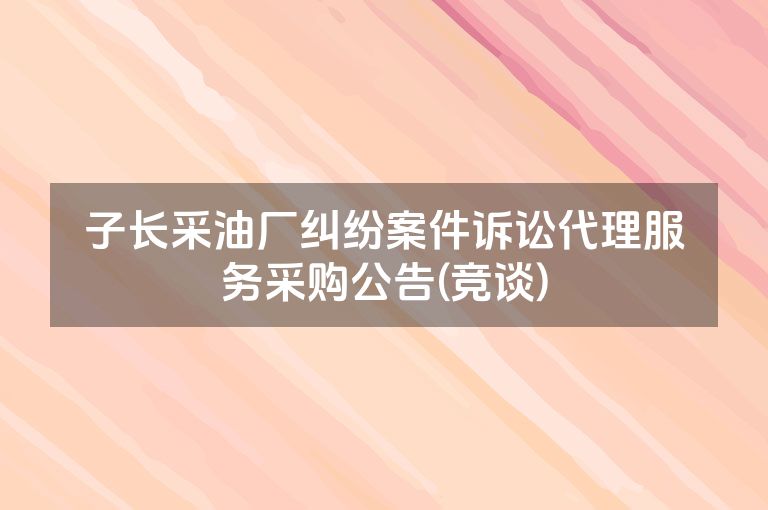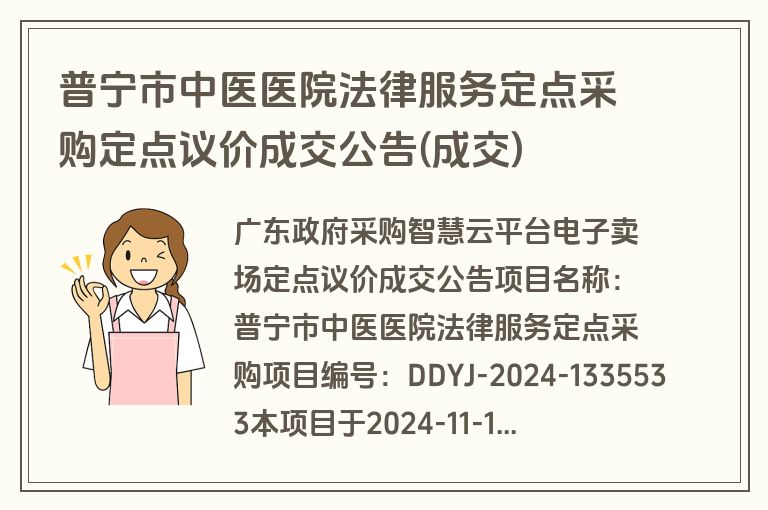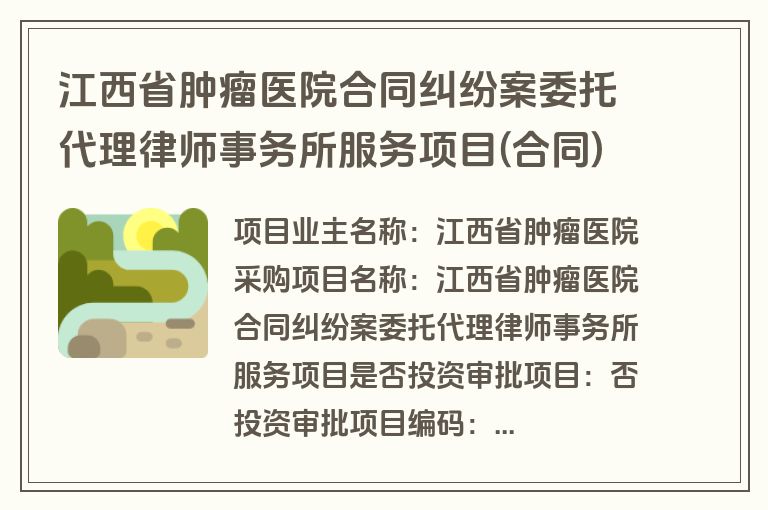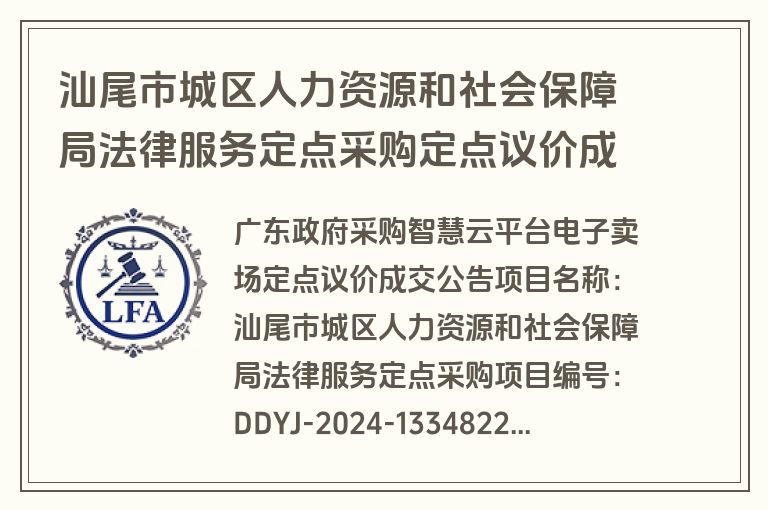Understanding New Rules for Delaying Retirement in China
On September 13, 2024, the 11th Session of the Standing Committee of the 14th National People’s Congress of China passed the Decision on Gradually Delaying the Statutory Retirement Age (the “Decision”). On the same day, the State Council, under the authorization of the Decision, issued the Measures for the Gradual Delaying of the Statutory Retirement Age (the “Measures”). Both the Decision and the Measures will take effect on January 1, 2025. These two rules introduce significant changes to key aspects such as the statutory retirement age and the minimum required years of social insurance contributions, marking the official start of China’s retirement system reform.
The reforms to the current retirement system as outlined in the Decision and Measures, primarily focus on two key areas:
1 Gradual, categorized raise in the statutory retirement age: Different statutory retirement ages will apply to various age groups.
2 A gradual increase in the minimum social insurance contribution years required for receiving monthly basic pensions: Eligible employees will have the option to choose “flexible” early or delayed retirement.
This article explores how these reforms will affect corporate employers in China and provides practical, targeted guidance.
1、Gradual, categorized raise in the statutory retirement age
As the Decision and Measures will take effect on January 1, 2025, employees who reach the statutory retirement age on or before December 31, 2024, will remain unaffected by the new rules. Please see the table below for further details:
Employees who reach their statutory retirement age on or after January 1, 2025, will undergo a gradual raise in their retirement age based on their age group and employee type (male employees, female employees in management or technical positions, and female employees in non-management or non-technical positions). The statutory retirement age will gradually rise to 63 years old for male employees, 58 years old for female employees in management or technical positions, and female employees in non-management or non-technical positions. Please see the table below for details:
Therefore, we recommend that employers take the following actions:
1: Update the wording regarding the statutory retirement age for employees in employment documents
With the adjustment of retirement policies, the previously uniform statutory retirement age provisions in employment documents are no longer applicable. Before further clarification of the relevant rules and policies, companies are advised to update the wording concerning statutory retirement age in labor contracts and employee handbooks in accordance with the Measures. Additionally, companies should incorporate provisions indicating that internal regulations will align with the latest national and local regulations.
2: Clarify the distinction between “Management or Technical Positions” and Non-Management or Non-Technical Positions for female employees
In practice, there is no consistent nationwide standard for determining whether female employees should retire at 55 or 50, leading to frequent disputes. In some regions, the outdated classifications from the 1970s, distinguishing between “cadre” and “worker” are still used, while in other areas, the retirement age for female employees is determined based on their classification as holding a “management or technical position.”
Although the Decision and Measures use the terms “original statutory retirement age of 55 years” and “original statutory retirement age of 50 years,” they do not explicitly clarify the criteria for determining whether a female employee should retire at 55 or 50. However, Article 5 of the Decision clearly states that the relevant provisions regarding retirement age in Interim Measures of the State Council on the Placement of Elderly, Weak, Sick, and Disabled Cadres and the Interim Measures of the State Council on the Retirement and Resignation of Workers will no longer be applicable. This indicates that the previous legal framework, which determined the retirement age of female employees based on their classification as “cadres” or “workers” will change with the implementation of the Decisions on January 1, 2025.
In the future, the key to determining the retirement age for female employees will lie in distinguishing whether the employee’s position is classified as a “management or technical position.” It is understood that the establishment and structuring of positions reflects an enterprise’s right to operate independently. In other words, companies have the discretion to define these roles based on their operational needs. Although future policies may provide a clearer definition of “management or technical positions,” it is advisable for companies to define and classify such positions in employment documents, such as employee handbooks. This will provide a basis for determining the retirement age of female employees and help mitigate potential disputes over retirement age.
3: Regarding Retirement Ages for Special Groups of Employees
With the repeal of the retirement age provisions in the Interim Measures of the State Council on the Placement of Elderly, Weak, Sick, and Disabled Cadres and the Interim Measures of the State Council on the Retirement and Resignation of Workers, the retirement ages for employees in special occupations, such as those working underground, at high altitudes, in high temperatures, in particularly physically demanding jobs, or in roles harmful to health, and the early retirement age for employees who lose working capacity due to illness, may undergo subsequent changes. Moreover, the retirement age rules for employees from Taiwan, Hong Kong, Macao, and foreign nationals are yet to be clarified through forthcoming laws, regulations, and related policies.
Therefore, for the afore-mentioned special groups of employees, it is advisable for companies to closely monitor any updates to laws, regulations, and related policies, and to revise the wording regarding retirement age in internal policies accordingly. Companies should also include clauses to ensure compliance with the latest national and local regulations.
2、A gradual increase in the minimum social insurance contribution years required for receiving monthly basic pensions
According to the Measures, beginning January 1, 2030, the minimum social insurance contribution years required for receiving monthly basic pensions will gradually increase from 15 years to 20 years, increasing by 6 months each year. Please refer to the table below for details:
According to the Measures, employees, after reaching the statutory retirement age prior to the delay (60 years old for male employees, 55 years for female employees in management or technical positions, 50 years for female employees in non-management or non-technical positions), may opt for flexible early retirement, after fulfilling the minimum social insurance contribution years required. However, this early retirement cannot commence more than three years before their delayed retirement age. Additionally, employees may choose to delay retirement beyond the statutory age with the company’s agreement, while this extension may not exceed three years.
The table below compares the key retirement conditions of the current retirement system with those in the new “flexible” retirement system outlined in the Decision and Measures. As retirement age policies are adjusted, companies will need to revise their workforce management processes to align with the legal framework established by the new “flexible” retirement system.
Therefore, we recommend that employers take the following actions:
1: Collect relevant employees’ information: Employers are advised to gather pertinent employee information to determine statutory retirement ages post-delay and to effectively plan retirement timing and procedures.
In line with Article 3 of the Measures, which prohibits employers from disregarding employees' preferences or unlawfully compelling them to select a retirement age, it is understood that employees meeting the necessary conditions may unilaterally and voluntarily decide on early retirement within a three-year time frame. Therefore, in addition to collecting employees’ birth dates, it is recommended that companies:
a) Collect additional information on employees’ social insurance contribution years to clarify and ascertain each employee’s statutory retirement age pre-delay and post-delay, as well as the potential timing for flexible early retirement which the employee is entitled to.
b) Confirm employees’ preferences regarding “flexible” early or delayed retirement and the time frame to facilitate advanced retirement planning.
2: Customize employment documents related to retirement
According to the Measures, employees need to reach an agreement with the company to delay retirement, while early retirement can be decided by employees unilaterally. Both delayed and early retirement involve processes related to the termination of labor contracts and retirement procedures.
In light of this, companies are advised to:
a) Clearly define the conditions for early or delayed retirement in their internal regulations. This should include provisions regarding work handover, advance notices, and compensation for damages, creating a structured framework for employees throughout the retirement process.
b) Establish the retirement date, procedures, and work handover arrangements with employees choosing early or delayed retirement through a signed agreement. This will ensure clarity and mutual understanding. Companies may consider preparing template agreements or confirmation letters specifically designed for early and delayed retirement scenarios.
Special Reminder:
The introduction of the “flexible” retirement policy may lead to conflicts with existing local policies concerning delayed retirement, as these may not align with the overarching Decision and Measures. For example, the Trial Opinions of the Shanghai Municipal Human Resources and Social Security Bureau on the Flexible Postponement of Basic Pension Applications by Various Talents in Enterprises in Shanghai stipulate that male employees may delay retirement generally up to 65 years of age, while female employees can do so only up to 60 years, without making distinctions based on management or technical roles. This directly contradicts the Measures, particularly impacting female employees whose previous statutory retirement age was 50 years.
Therefore, if companies have already applied for delayed retirement under current local policies, it is advisable to verify the statutory retirement age(post-delay) for each employee, to ensure that existing delayed retirement arrangements (and any executed delayed retirement agreements) are in compliance with the Decision and Measures. Communication with local human resources and social security departments is recommended to determine whether existing delayed retirement agreements need to be invalidated, updated, or amended accordingly.
3、Employment relationship after reaching statutory retirement age without receiving pension benefits
In practice, it is a common for employees to reach the statutory retirement age without receiving pension benefits. There is no unified nationwide standard regarding the legal relationship between employees and employers in this situation, particularly concerning whether an employer has the right to unilaterally terminate the employment. As a result, judicial opinions on this matter vary.
According to Case No. 2023-16-2-186-001 from the People’s Court Case Database, the legal relationship in such cases depends on the reason why the employee has not received pension benefits. If the reason is attributable to the employer, then it is considered a labor relationship, necessitating adherence to the relevant rules for termination and severance payment. In this case, the employer does not have the right to unilaterally terminate the labor contract. Conversely, if the employee’s failure to receive pension benefits is not attributable to the employer, the relationship may be considered a labor service relationship, allowing the employer to terminate the contract without severance payment.
Under the new “flexible” retirement system, both the pre-delay and post-delay statutory retirement ages will be used to determine an employee’s retirement age. Additionally, the gradual increase in the minimum contribution years for social insurance from 15 to 20 years could introduce further complexities, necessitating additional clarification of policies and legal interpretations.
4、Final thoughts
Population aging poses significant challenges for many countries, including China, making urgent reform of the current retirement legal framework essential. The introduction of the Decision and Measures marks a pivotal step in reforming China’s retirement system. Future policies will evolve gradually, and the application of relevant laws will continue to be adjusted.
For companies, the primary focus should be on gathering and verifying information regarding employees’ statutory retirement ages (both pre-delay and post-delay) and social insurance contribution years. It is crucial to ensure that labor contracts, employee handbooks, and other related documents are updated accordingly.
转载自上海市通力律师事务所 PatrickGu,LinZang,XiyuanZhang
The reforms to the current retirement system as outlined in the Decision and Measures, primarily focus on two key areas:
1 Gradual, categorized raise in the statutory retirement age: Different statutory retirement ages will apply to various age groups.
2 A gradual increase in the minimum social insurance contribution years required for receiving monthly basic pensions: Eligible employees will have the option to choose “flexible” early or delayed retirement.
This article explores how these reforms will affect corporate employers in China and provides practical, targeted guidance.
As the Decision and Measures will take effect on January 1, 2025, employees who reach the statutory retirement age on or before December 31, 2024, will remain unaffected by the new rules. Please see the table below for further details:
Employees who reach their statutory retirement age on or after January 1, 2025, will undergo a gradual raise in their retirement age based on their age group and employee type (male employees, female employees in management or technical positions, and female employees in non-management or non-technical positions). The statutory retirement age will gradually rise to 63 years old for male employees, 58 years old for female employees in management or technical positions, and female employees in non-management or non-technical positions. Please see the table below for details:
Therefore, we recommend that employers take the following actions:
1: Update the wording regarding the statutory retirement age for employees in employment documents
With the adjustment of retirement policies, the previously uniform statutory retirement age provisions in employment documents are no longer applicable. Before further clarification of the relevant rules and policies, companies are advised to update the wording concerning statutory retirement age in labor contracts and employee handbooks in accordance with the Measures. Additionally, companies should incorporate provisions indicating that internal regulations will align with the latest national and local regulations.
2: Clarify the distinction between “Management or Technical Positions” and Non-Management or Non-Technical Positions for female employees
In practice, there is no consistent nationwide standard for determining whether female employees should retire at 55 or 50, leading to frequent disputes. In some regions, the outdated classifications from the 1970s, distinguishing between “cadre” and “worker” are still used, while in other areas, the retirement age for female employees is determined based on their classification as holding a “management or technical position.”
Although the Decision and Measures use the terms “original statutory retirement age of 55 years” and “original statutory retirement age of 50 years,” they do not explicitly clarify the criteria for determining whether a female employee should retire at 55 or 50. However, Article 5 of the Decision clearly states that the relevant provisions regarding retirement age in Interim Measures of the State Council on the Placement of Elderly, Weak, Sick, and Disabled Cadres and the Interim Measures of the State Council on the Retirement and Resignation of Workers will no longer be applicable. This indicates that the previous legal framework, which determined the retirement age of female employees based on their classification as “cadres” or “workers” will change with the implementation of the Decisions on January 1, 2025.
In the future, the key to determining the retirement age for female employees will lie in distinguishing whether the employee’s position is classified as a “management or technical position.” It is understood that the establishment and structuring of positions reflects an enterprise’s right to operate independently. In other words, companies have the discretion to define these roles based on their operational needs. Although future policies may provide a clearer definition of “management or technical positions,” it is advisable for companies to define and classify such positions in employment documents, such as employee handbooks. This will provide a basis for determining the retirement age of female employees and help mitigate potential disputes over retirement age.
3: Regarding Retirement Ages for Special Groups of Employees
With the repeal of the retirement age provisions in the Interim Measures of the State Council on the Placement of Elderly, Weak, Sick, and Disabled Cadres and the Interim Measures of the State Council on the Retirement and Resignation of Workers, the retirement ages for employees in special occupations, such as those working underground, at high altitudes, in high temperatures, in particularly physically demanding jobs, or in roles harmful to health, and the early retirement age for employees who lose working capacity due to illness, may undergo subsequent changes. Moreover, the retirement age rules for employees from Taiwan, Hong Kong, Macao, and foreign nationals are yet to be clarified through forthcoming laws, regulations, and related policies.
Therefore, for the afore-mentioned special groups of employees, it is advisable for companies to closely monitor any updates to laws, regulations, and related policies, and to revise the wording regarding retirement age in internal policies accordingly. Companies should also include clauses to ensure compliance with the latest national and local regulations.
According to the Measures, beginning January 1, 2030, the minimum social insurance contribution years required for receiving monthly basic pensions will gradually increase from 15 years to 20 years, increasing by 6 months each year. Please refer to the table below for details:
According to the Measures, employees, after reaching the statutory retirement age prior to the delay (60 years old for male employees, 55 years for female employees in management or technical positions, 50 years for female employees in non-management or non-technical positions), may opt for flexible early retirement, after fulfilling the minimum social insurance contribution years required. However, this early retirement cannot commence more than three years before their delayed retirement age. Additionally, employees may choose to delay retirement beyond the statutory age with the company’s agreement, while this extension may not exceed three years.
The table below compares the key retirement conditions of the current retirement system with those in the new “flexible” retirement system outlined in the Decision and Measures. As retirement age policies are adjusted, companies will need to revise their workforce management processes to align with the legal framework established by the new “flexible” retirement system.
Therefore, we recommend that employers take the following actions:
1: Collect relevant employees’ information: Employers are advised to gather pertinent employee information to determine statutory retirement ages post-delay and to effectively plan retirement timing and procedures.
In line with Article 3 of the Measures, which prohibits employers from disregarding employees' preferences or unlawfully compelling them to select a retirement age, it is understood that employees meeting the necessary conditions may unilaterally and voluntarily decide on early retirement within a three-year time frame. Therefore, in addition to collecting employees’ birth dates, it is recommended that companies:
a) Collect additional information on employees’ social insurance contribution years to clarify and ascertain each employee’s statutory retirement age pre-delay and post-delay, as well as the potential timing for flexible early retirement which the employee is entitled to.
b) Confirm employees’ preferences regarding “flexible” early or delayed retirement and the time frame to facilitate advanced retirement planning.
2: Customize employment documents related to retirement
According to the Measures, employees need to reach an agreement with the company to delay retirement, while early retirement can be decided by employees unilaterally. Both delayed and early retirement involve processes related to the termination of labor contracts and retirement procedures.
In light of this, companies are advised to:
a) Clearly define the conditions for early or delayed retirement in their internal regulations. This should include provisions regarding work handover, advance notices, and compensation for damages, creating a structured framework for employees throughout the retirement process.
b) Establish the retirement date, procedures, and work handover arrangements with employees choosing early or delayed retirement through a signed agreement. This will ensure clarity and mutual understanding. Companies may consider preparing template agreements or confirmation letters specifically designed for early and delayed retirement scenarios.
Special Reminder:
The introduction of the “flexible” retirement policy may lead to conflicts with existing local policies concerning delayed retirement, as these may not align with the overarching Decision and Measures. For example, the Trial Opinions of the Shanghai Municipal Human Resources and Social Security Bureau on the Flexible Postponement of Basic Pension Applications by Various Talents in Enterprises in Shanghai stipulate that male employees may delay retirement generally up to 65 years of age, while female employees can do so only up to 60 years, without making distinctions based on management or technical roles. This directly contradicts the Measures, particularly impacting female employees whose previous statutory retirement age was 50 years.
Therefore, if companies have already applied for delayed retirement under current local policies, it is advisable to verify the statutory retirement age(post-delay) for each employee, to ensure that existing delayed retirement arrangements (and any executed delayed retirement agreements) are in compliance with the Decision and Measures. Communication with local human resources and social security departments is recommended to determine whether existing delayed retirement agreements need to be invalidated, updated, or amended accordingly.
In practice, it is a common for employees to reach the statutory retirement age without receiving pension benefits. There is no unified nationwide standard regarding the legal relationship between employees and employers in this situation, particularly concerning whether an employer has the right to unilaterally terminate the employment. As a result, judicial opinions on this matter vary.
According to Case No. 2023-16-2-186-001 from the People’s Court Case Database, the legal relationship in such cases depends on the reason why the employee has not received pension benefits. If the reason is attributable to the employer, then it is considered a labor relationship, necessitating adherence to the relevant rules for termination and severance payment. In this case, the employer does not have the right to unilaterally terminate the labor contract. Conversely, if the employee’s failure to receive pension benefits is not attributable to the employer, the relationship may be considered a labor service relationship, allowing the employer to terminate the contract without severance payment.
Under the new “flexible” retirement system, both the pre-delay and post-delay statutory retirement ages will be used to determine an employee’s retirement age. Additionally, the gradual increase in the minimum contribution years for social insurance from 15 to 20 years could introduce further complexities, necessitating additional clarification of policies and legal interpretations.
Population aging poses significant challenges for many countries, including China, making urgent reform of the current retirement legal framework essential. The introduction of the Decision and Measures marks a pivotal step in reforming China’s retirement system. Future policies will evolve gradually, and the application of relevant laws will continue to be adjusted.
For companies, the primary focus should be on gathering and verifying information regarding employees’ statutory retirement ages (both pre-delay and post-delay) and social insurance contribution years. It is crucial to ensure that labor contracts, employee handbooks, and other related documents are updated accordingly.
转载自上海市通力律师事务所 PatrickGu,LinZang,XiyuanZhang
上一篇:已经是第一篇下一篇:管理人在破产案件中的履职智慧
本文2024-10-06 15:56:07发表“律法实务”栏目。
本文链接:https://www.cmprt.cn/article/8924f631b620bcb6.html
您需要登录后才可以发表评论, 登录 或者 注册
最新文档
最新实务








